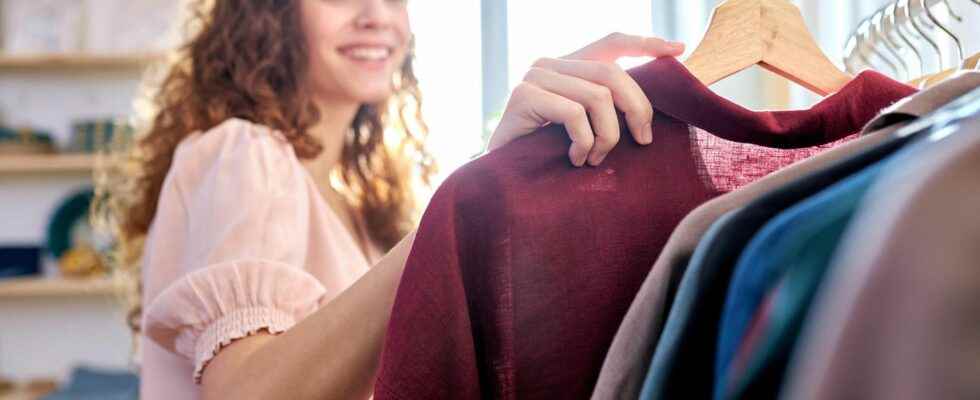More sustainability
Three trends that benefit the environment
Second-hand fashion is currently on everyone’s lips.
© Roman / Adobe Stock
What can we do for the environment in everyday life? Sustainability activist Thekla Wilkening reveals her three favorite trends in an interview.
Topics such as climate change and sustainability are still on everyone’s lips. But how can we make our everyday life even more environmentally friendly? Thekla Wilkening, sustainability activist and author of “The Organic Pizza Dilemma. The Surprising Guide to More Sustainability” (Redline Verlag), emphasizes in an interview with the news agency spot on news: “Each and every one of us can help turn this trend into a firm one to start moving.” In an interview, she reveals her three favorite trends that bring us forward in terms of sustainability.
second chance
“The re-commerce business is booming. There is hardly an online fashion platform where you can’t buy used clothing. The range of start-ups and labels that rent out fashion is also growing. Second-hand fashion saves resources such as materials, water and energy and therefore has a far better ecological balance than new clothing. It is also easy on the wallet, leaves more room for your own style and is fun.
This is also proven by the outfits of the ‘Sex and the City’ reboot ‘And Just Like That…’. An eclectic mix of second-hand designer pieces and vintage pieces. Particularly practical now that the 2000s are making a fashion comeback, with microminis and low-rise jeans. Instead of buying new, quickly and cheaply produced clothing, we should go back to the originals from the catacombs of the closet. And if you’re not sure whether this (slightly traumatic) style revival is really the right thing to do, borrow the look first.”
Sustainable Banking
“The sentence ‘Money works’ takes on a whole new meaning. Because money should now also act sustainably. To this end, the EU introduced the taxonomy regulation as part of the Green New Deal, a uniform classification system that lists green and sustainable economic activities. Funds and ETFs that focus on sustainable investments are trading hotter than conventional ones.
Since the money is already working in the bank, it is crucial to switch to a sustainable bank now. This works easier than feared, because the new stars in the banking sky are not only sustainable, but also digital, fast and used to the high demands of modern customers. A resolution that can be implemented immediately.”
CO2 becomes ethanol
“Life on Earth as we are living it right now emits too much carbon dioxide, CO2, into the atmosphere. Among the biggest emitters are the coal, steel and cement industries. What if the CO2 didn’t even get into the air, but would be captured and used directly? This is the question that some start-ups are also asking themselves. One recently succeeded in deriving the climate-damaging gas directly from the industrial chimney into a bioreactor. In this bioreactor, the CO2 is then also fermented Bacteria converted into Lanzanol Lanzanol is an ethanol, a monohydric alcohol with the molecular formula C2H6O An incredibly versatile raw material, found in wine and beer, as a solvent in perfumes or biofuel and also as a basis for packaging.
This is where we encounter the freshly recycled CO2 from now on every day in everyday life: The ‘Denkmit dishwashing liquid ultra nature’ is the first product in a bottle with 30 percent plastic made from recycled CO2. And there is also fashion, because a low-carbon polyester yarn can also be made from Lanzanol. This is a groundbreaking technology that can be scaled industrially and we will certainly see it more often.”
